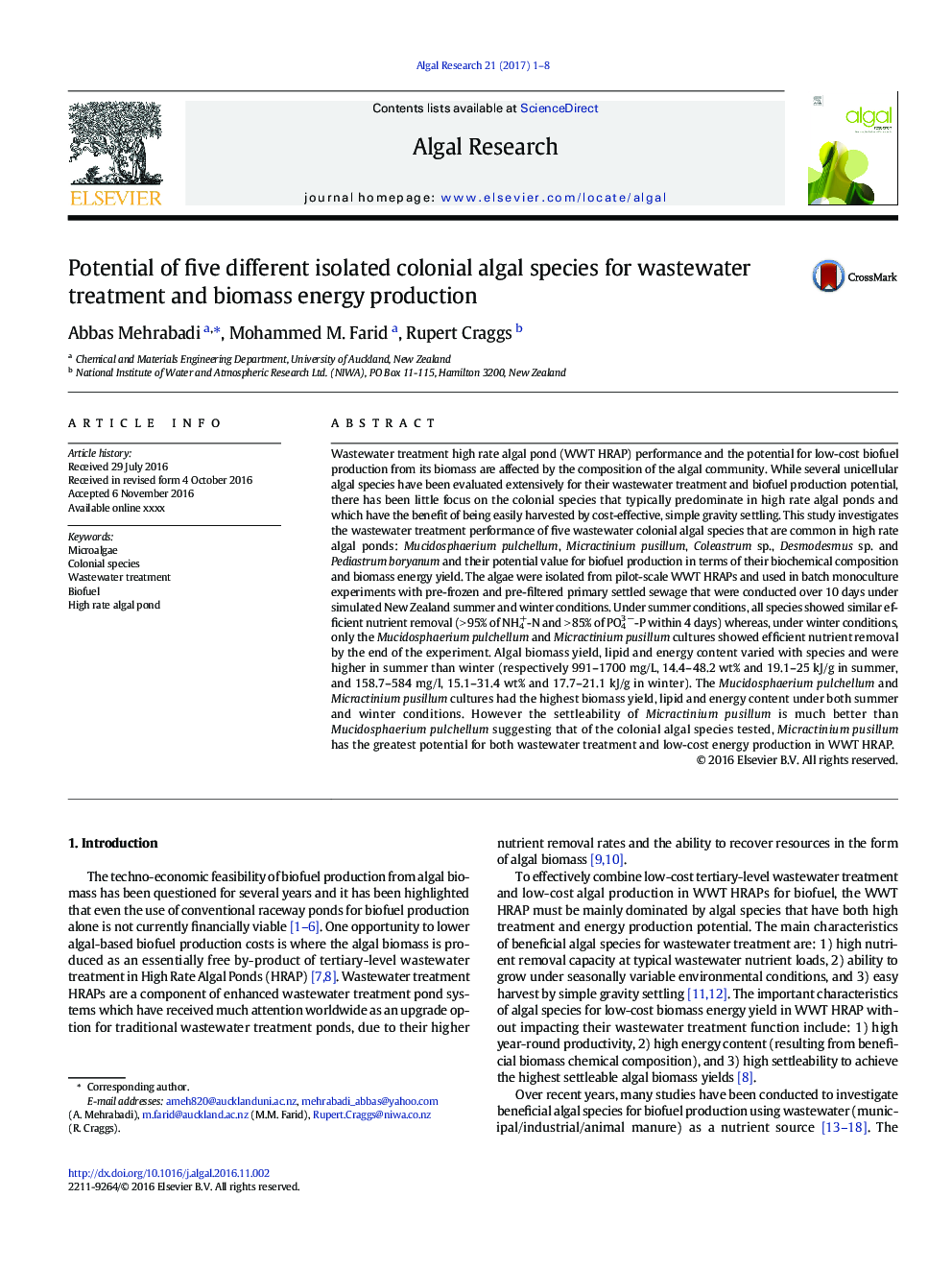| کد مقاله | کد نشریه | سال انتشار | مقاله انگلیسی | نسخه تمام متن |
|---|---|---|---|---|
| 5478492 | 1521811 | 2017 | 8 صفحه PDF | دانلود رایگان |
عنوان انگلیسی مقاله ISI
Potential of five different isolated colonial algal species for wastewater treatment and biomass energy production
ترجمه فارسی عنوان
پتانسیل پنج گونه مختلف جلبک های استعماری جدا شده برای تصفیه فاضلاب و تولید انرژی زیست توده
دانلود مقاله + سفارش ترجمه
دانلود مقاله ISI انگلیسی
رایگان برای ایرانیان
کلمات کلیدی
موضوعات مرتبط
مهندسی و علوم پایه
مهندسی انرژی
انرژی های تجدید پذیر، توسعه پایدار و محیط زیست
چکیده انگلیسی
Wastewater treatment high rate algal pond (WWT HRAP) performance and the potential for low-cost biofuel production from its biomass are affected by the composition of the algal community. While several unicellular algal species have been evaluated extensively for their wastewater treatment and biofuel production potential, there has been little focus on the colonial species that typically predominate in high rate algal ponds and which have the benefit of being easily harvested by cost-effective, simple gravity settling. This study investigates the wastewater treatment performance of five wastewater colonial algal species that are common in high rate algal ponds: Mucidosphaerium pulchellum, Micractinium pusillum, Coleastrum sp., Desmodesmus sp. and Pediastrum boryanum and their potential value for biofuel production in terms of their biochemical composition and biomass energy yield. The algae were isolated from pilot-scale WWT HRAPs and used in batch monoculture experiments with pre-frozen and pre-filtered primary settled sewage that were conducted over 10Â days under simulated New Zealand summer and winter conditions. Under summer conditions, all species showed similar efficient nutrient removal (>Â 95% of NH4+-N and >Â 85% of PO43Â â-P within 4Â days) whereas, under winter conditions, only the Mucidosphaerium pulchellum and Micractinium pusillum cultures showed efficient nutrient removal by the end of the experiment. Algal biomass yield, lipid and energy content varied with species and were higher in summer than winter (respectively 991-1700Â mg/L, 14.4-48.2Â wt% and 19.1-25Â kJ/g in summer, and 158.7-584Â mg/l, 15.1-31.4Â wt% and 17.7-21.1Â kJ/g in winter). The Mucidosphaerium pulchellum and Micractinium pusillum cultures had the highest biomass yield, lipid and energy content under both summer and winter conditions. However the settleability of Micractinium pusillum is much better than Mucidosphaerium pulchellum suggesting that of the colonial algal species tested, Micractinium pusillum has the greatest potential for both wastewater treatment and low-cost energy production in WWT HRAP.
ناشر
Database: Elsevier - ScienceDirect (ساینس دایرکت)
Journal: Algal Research - Volume 21, January 2017, Pages 1-8
Journal: Algal Research - Volume 21, January 2017, Pages 1-8
نویسندگان
Abbas Mehrabadi, Mohammed M. Farid, Rupert Craggs,
